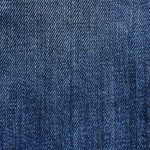You’ll want to wash your scuba knit fabric with cold water and a gentle cycle or hand wash to keep it stretchy and vibrant. Use a mild liquid detergent without bleach or fabric softeners, and turn your garment inside out to protect the surface. Avoid wringing it out—gently press the water out instead. Lay it flat to air dry away from direct sunlight, and steer clear of the dryer to maintain elasticity. Keep these tips in mind to help your fabric last longer and stay looking great.
Table of Contents
Key Takeaways
- Turn scuba knit garments inside out and close zippers or buttons before washing to protect the fabric surface.
- Wash in cold water on a gentle cycle or hand wash using a mild, bleach-free detergent.
- Avoid mixing with rough fabrics and do not overload the washing machine to prevent damage.
- Gently press out excess water without wringing and lay flat to air dry away from direct sunlight.
- Store folded neatly and avoid tumble drying or hanging heavy pieces to maintain shape and elasticity.
Understanding Scuba Knit Fabric Composition
Scuba knit fabric combines polyester and spandex to create a smooth, stretchy material with a neoprene-like feel.
When you wear or handle scuba knit, you’ll notice its firmness and thickness, which gives it structure without being stiff.
Polyester provides durability and resistance to shrinking or wrinkling, while spandex adds the stretchiness that makes the fabric comfortable and flexible.
This blend also makes scuba knit resistant to moisture and quick to dry, so it’s great for activewear and fashion pieces alike.
Understanding this composition helps you realize why scuba knit requires gentle care — the spandex fibers can lose elasticity if exposed to harsh conditions.
Knowing what it’s made of guarantees you treat it right and keep it looking great longer.
Preparing Scuba Knit Items for Washing
Before you toss your scuba knit garments into the wash, take a moment to check for any stains or spots that need pre-treating. This step guarantees your fabric stays looking fresh and vibrant.
Next, follow these steps to prepare your scuba knit items properly:
- Turn the garment inside out to protect the outer surface.
- Close any zippers or fasten buttons to prevent snagging.
- Separate your scuba knit from rough fabrics like denim or towels.
- Avoid overloading the washing machine, giving your clothes space to move freely.
Taking these simple precautions helps maintain the fabric’s texture and shape, setting you up for a successful wash cycle without damage or color fading.
Recommended Washing Methods for Scuba Knit
Once you’ve prepped your scuba knit garments properly, it’s time to choose the best washing method to keep them in top condition.
Always opt for cold water to prevent shrinking and maintain fabric flexibility. Use a gentle cycle on your washing machine or better yet, hand wash to reduce stress on the fabric.
Choose cold water and gentle washing to keep your scuba knit garments flexible and shrink-free.
Select a mild, liquid detergent free of bleach or fabric softeners, as harsh chemicals can damage the knit’s texture. Avoid wringing or twisting your scuba knit items; instead, gently press out excess water.
If you decide to machine wash, place the garments inside a mesh laundry bag to protect them from friction.
Drying and Storing Scuba Knit Clothing
Although proper washing is essential, how you dry and store your scuba knit clothing plays a crucial role in maintaining its shape and texture.
Follow these steps to keep your garments looking their best:
- Lay the clothing flat on a clean, dry towel to air dry, avoiding direct sunlight which can fade colors.
- Never use a tumble dryer, as high heat can damage the fabric’s elasticity and structure.
- Store scuba knit items folded neatly in a drawer or on a shelf to prevent stretching or misshaping.
- Avoid hanging heavy scuba knit pieces for long periods, as this can cause them to lose their shape.
Tips to Maintain the Stretch and Color of Scuba Knit
To keep your scuba knit fabric looking vibrant and flexible, you need to handle it with care during washing and wearing.
Always wash it in cold water using a gentle cycle to prevent stretching and fading. Avoid bleach and harsh detergents, as they can break down the fibers and dull the color.
When drying, lay your scuba knit flat instead of using a dryer to maintain its shape. Turn your garment inside out before washing to protect the surface from friction and color loss.
Also, avoid wringing or twisting the fabric, which can damage the stretch. When storing, hang your scuba knit clothes on padded hangers or fold them neatly to prevent creasing.
These simple steps will help you preserve both the stretch and color of your scuba knit for longer.
Frequently Asked Questions
Can Scuba Knit Fabric Be Ironed Without Damage?
You shouldn’t iron scuba knit fabric directly because it can melt or get damaged. Instead, use a low heat setting and place a cloth between the iron and fabric to protect it. Always test first.
Is Scuba Knit Fabric Hypoallergenic?
Sensitive skin? Scuba knit fabric’s synthetic structure usually resists allergens, making it a hypoallergenic haven for many. However, you should still test it first, since individual reactions can vary despite its generally gentle nature.
Does Scuba Knit Fabric Pill Over Time?
Scuba knit fabric can pill over time, especially with frequent friction or washing. You’ll want to handle it gently and avoid harsh detergents to minimize pilling and keep your fabric looking smooth and fresh longer.
Can Scuba Knit Fabric Be Used for Swimwear?
Though scuba knit feels thick and structured, you can definitely use it for swimwear because it’s stretchy and durable. However, it’s less breathable than traditional swim fabrics, so consider comfort alongside style when choosing it.
How Does Scuba Knit Fabric Differ From Neoprene?
You’ll notice scuba knit feels softer and stretches more than neoprene. While neoprene’s dense and insulating, scuba knit’s lighter and breathable, making it great for stylish garments rather than heavy-duty wetsuits or thermal protection.
- Does Chiffon Fabric Stink - July 15, 2025
- Does Chiffon Fabric Affect the Economy - July 15, 2025
- Does Cotton Fabric Have a Nap - July 15, 2025







